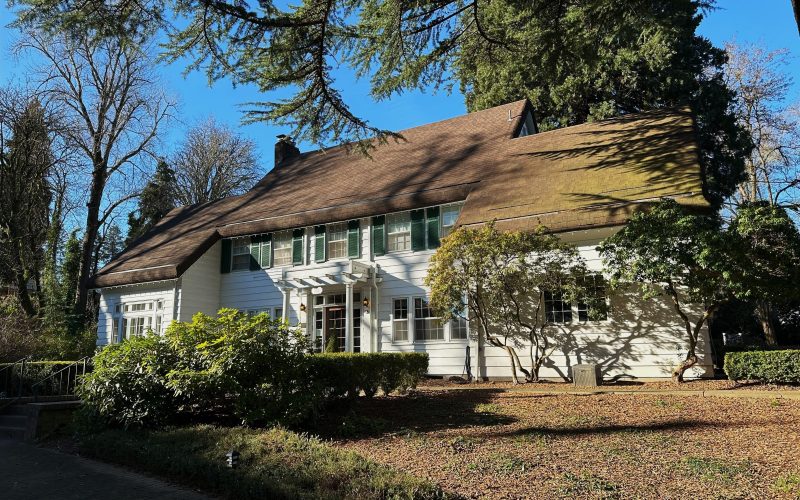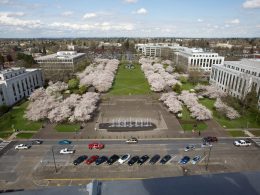The National Register of Historic Places has designated a West Linn residence that served as the office of a doctor who helped create one of the country’s first prepaid health programs during the Great Depression.
The National Park Service considered the Dr. Edward and Anne McLean House noteworthy because it was linked to the creation of a pioneering physician-sponsored health insurance program.
For a set yearly price, health services were available to employees of nearby paper mills or forestry firms as well as their families. The organization is called the Clackamas County Physicians’ Association.
Nationwide adoption of prepaid, HMO-style healthcare, which covered a member’s hospital, medical, and prescription services, happened gradually.
The house was constructed in 1927 for rural physician Edward McLean and his anesthetist nurse wife, Anne, and it was there that the idea was created and the physicians association was established.
According to architectural historian Kristen Minor, who conducted the research and authored the document that successfully supported the house’s historic significance, Dr. McLean’s home office, a well-preserved space on the second floor, best reflects the beginnings of the Physicians’ Association of Clackamas County.
Between 1932 and 1938, McLean, from his home office, worked with Dr. John (Jack) G. P. Cleland and Dr. William O. Steele to create the nonprofit Physicians’ Association of Clackamas County.
According to Minor, their goal was to offer high-quality, reasonably priced healthcare coverage that was tailored to the need of both local residents and medical professionals.
Notable features of the century-old home on the Willamette River’s southern bank include its English Cottage rolled-edge imitation thatched roof and eclectic Colonial Revival architectural design. Most significantly, the three-story home’s design and numerous interior elements are unique.
The polished oak floors, the native black walnut baseboards, and the glazed tile fireplace surround, which were inspired by Craftsman design, were all mentioned by Oregon’s State Advisory Committee on Historic Preservation when they approved the candidacy.
The sunroom still has its original three-sided full-wall windows, the formal dining room still has a built-in corner cabinet with an arched glass front, and the bathrooms still have hexagonal tile flooring. Many vintage light fixtures and cast-iron radiators have also endured over the years.
The now-famous office and four bedrooms are reached by the staircase with turned wood balusters. Along with their kids, Mason, Anna, Edward N., Margaret, and Jean, the McLeans occupied the residence.
A second apartment with a bathroom and a built-in tub was created as a maid’s quarters above the garage.
For the design and construction of their upscale 17-room mansion, the McLeans turned to the Henderson-Bankus Company, which was run by realtor-builders who marketed lots in new developments.
A pony barn, tennis court, and landscaping were erected by the McLeans.
When the Abernethy Bridge was built in 1970 to connect Oregon City and West Linn, the original four-acre property at 5350 River St. was reduced to 2.5 acres.
The McLean House is on the West Linn Historic Inventory and has been owned by the City of West Linn since 1969.
The house was about to be auctioned due to neglect and the need for repairs, but a group of volunteers stepped up to save it. According to Minor, civic and Scout organizations collaborated with the Friends of the McLean House to repair the house and grounds.
West Linn was founded on a portion of the Willamette River that was a significant food supply for the lower Willamette Valley’s Indigenous populations, according to the McLean House nomination statement. Additionally, the Kalapuyan, Molalla, and Clackamas Chinookan peoples used the area as a trading hub.
Nearly a century ago, when the McLean house’s foundation was excavated using a horse-drawn scoop, the construction team discovered cultural items such arrowheads, ax heads, grinding stones, stone tools, and beaded ornaments.
The McLeans
In 1886, Edward Huntington McLean was born in Klamath Falls, which was then known as Linkville. According to the West Linn Historical Society, he was the son of a Presbyterian missionary and preacher who relocated his family to Puerto Rico in 1902 to assist in building the Presbyterian Hospital in San Juan.
High school at San Juan, Princeton University in New Jersey, and Columbia University in New York, where he obtained a medical degree in 1912, were all completed by Edward McLean in 1904.
During his surgical residency and internship at St. Luke’s Hospital in New York City, he met Anne Mathida Cooper, who would later become his wife. The daughter of a homeopathic doctor, Anne was born in Delaware in 1888. In 1913, she received her nursing degree from St. Luke’s Training School.
She worked as an anesthetist, an assistant at Edward’s medical office in Oregon City, and a nurse before they were married in 1916. According to Minor’s research, she also instructed home nursing courses for the American Red Cross during World War II.
Captain Edward McLean of the Oregon National Guard was posted on the border with Mexico. In addition, he served as a staff volunteer at the People’s Institute, a free medical clinic and dispensary for Portland’s impoverished, and an assistant professor of pathology at the University of Oregon’s medical school campus in Portland.
Oregon real estate
-
Guide Dogs for the Blind will more than double size of its Oregon campus
-
Architect Van Evera Bailey s Portland midcentury modern time capsule for sale at $2.3M
-
Trump tariffs could blunt already stalling Oregon homebuilding, other construction, industry reps say
-
Portland midcentury modern with Space Age appeal sold for $1M. See the swank interior
-
Average mortgage rate falls, third straight weekly decline
Janet Eastman writes on trends and design. You can follow her on X@janeteastman and contact her at 503-294-4072 and [email protected].










